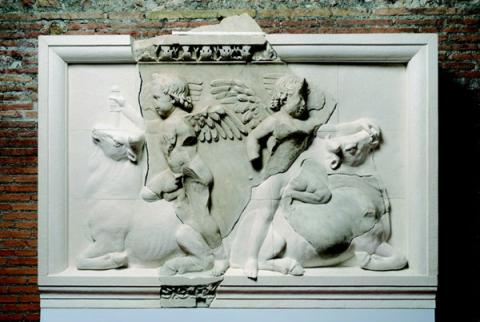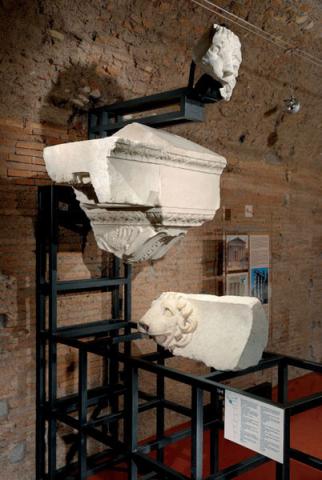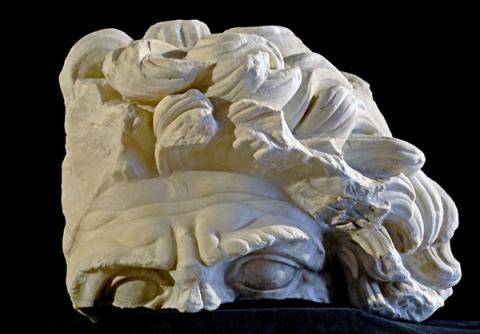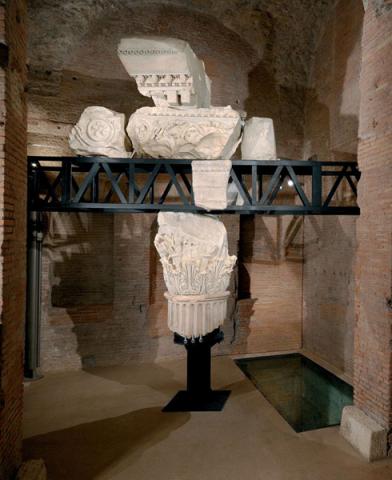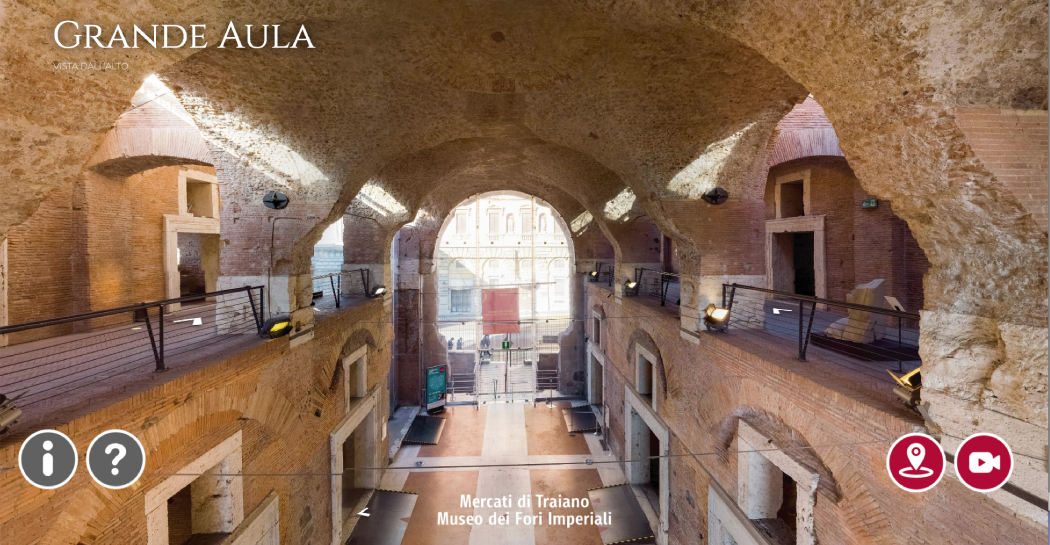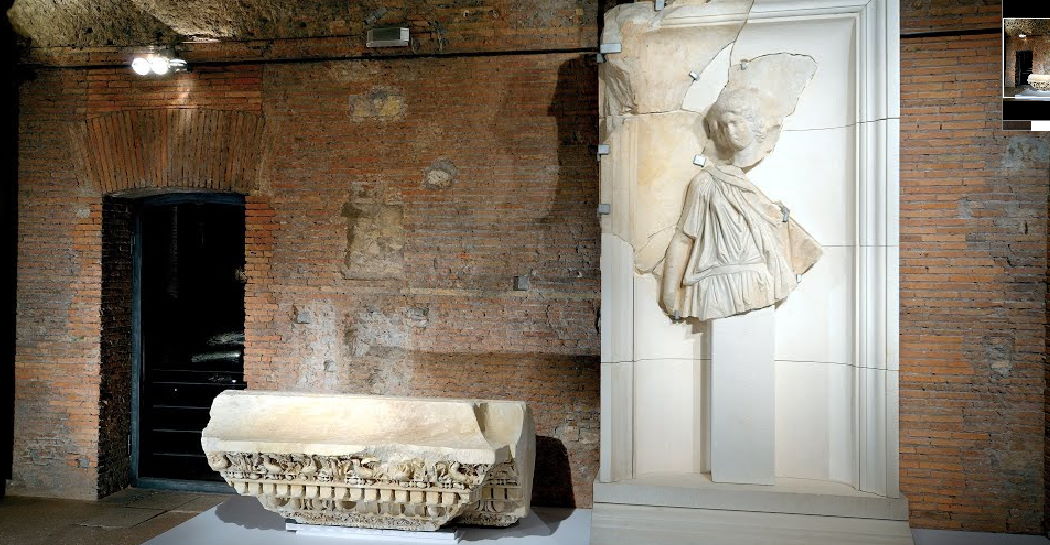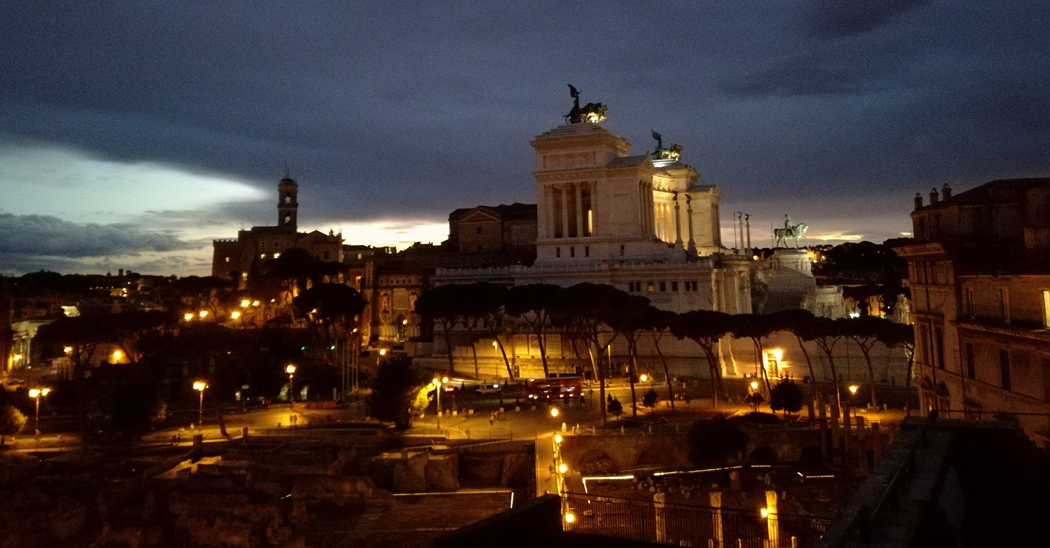Forum of Nerva
In the constructive sequence of the imperial complexes, the Forum that was inaugurated by Nerva in 97 AD is situated in a symbolic position. Actually conceived by his predecessor Domitian (81-96 AD) in a programme for the use of the urban space, it gave unitary to that area via original urban and architectural solutions.
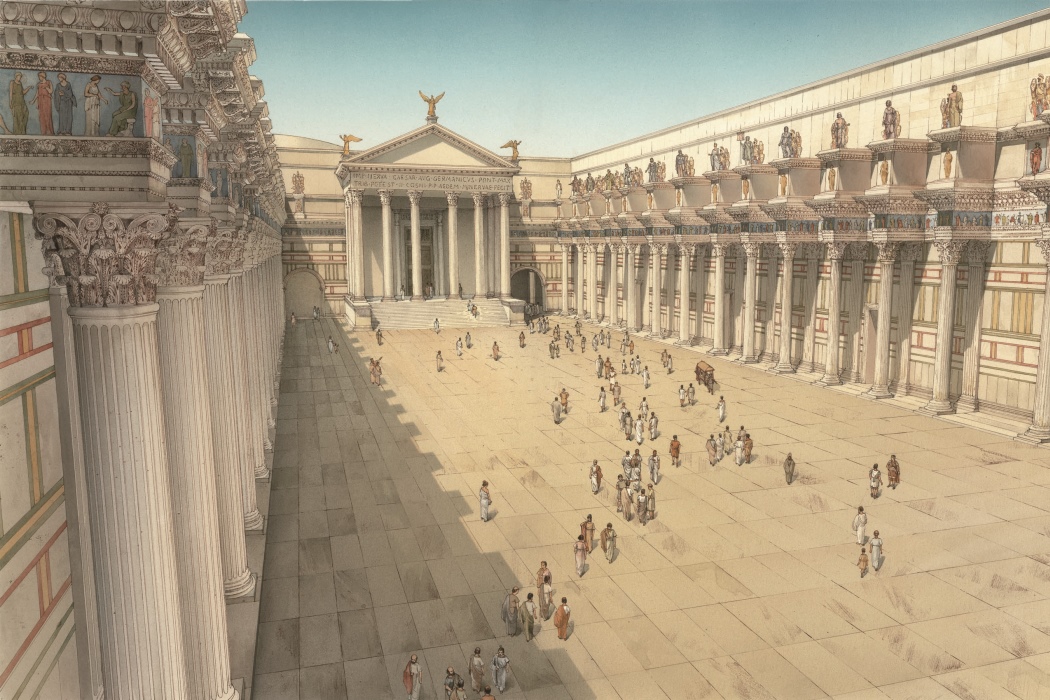
In fact, an ancient path was built in the narrow space between the Forums of Caesar, Augustus and the Temple of Peace on a section of the Argiletum, the road which connected the republican Forum with the Subura district. The original function of this structure is enshrined in its ancient name Forum Transitorium, as well as the plans adopted, which required a structure of longitudinally orientation.
The complex was surrounded by high walls in peperino blocks lined with slabs of marble. Access was from the sides. Three openings on the Roman Forum side and on the opposite side, there was a monumental entrance that consisted of an exedra porticata in the shape of a horseshoe, as recorded in the Urbis Form. This entrance was called Porticus Absidata in the Regional Catalogues of Constantine’s era.
The portico was preceded by a Temple dedicated to Minerva, the goddess who protected Domitian. Her death would have ensured the apotheosis of the gods, as had already been the case of Hercules. However after the death of Domitian, the forum was given the name of Nerva, thus the memoriae damnatio (damnation of memory) had to be rewritten. The temple had a hex style pronaos and the marble columns were interposed with irregular columns that supported Corinthian Capitals. The architraves rested that rested on them were decorated with bucrani (ox skulls) and sacrificial instruments.
Foro di Nerva, Attico dei Portici


























